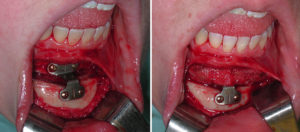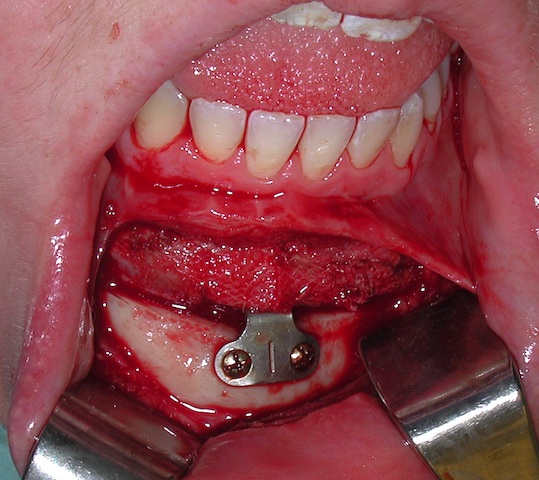The sliding genioplasty is a well known chin reshaping procedure that is most commonly associated with a horizontal advancement augmentation. In so doing it is recognized that there will be a resultant ‘step off’ that did not previously exist. As the lower downfractured bone segment is brought forward underneath the fixed superior bone segment, a change in the bony profile of the chin will result. While this involves bone, it is really not that different than what is created by a chin implant…the lower end of the soft tissue chin pad is pushed forward while the upper half of the soft tissue chin pad remains stationary above the implant. (alloplastic step off deformity)
This bony step-off ensures that the labiomental fold from any sliding genioplasty of any significant horizontal advancement will get deeper. The relevant question is whether this is caused by the relative profile difference between the presurgical labiomental fold depth and the new forward position of the chin or whether the labiomental fold also gets deeper because it ‘falls’ into the newly created bony profile defect…or some combination of both?

What type of material to fill in the bony step off can be debated. Ideally autogenous bone is best but few patients would want to undergo a harvest site to do so. Other options exist such as tissue bank or allogeneic bone particles and these are often used. Another option is to ‘recycle’ an existing implant of which a sliding genioplasty is often done to replace. This works best with a concurrently removed Medpor or mesh implant which already has some tissue growth into it. This is what I call an ‘autoimplant’. This may be done as much for convenience as opposed to proven effectiveness.
Dr. Barry Eppley
Indianapolis, Indiana



